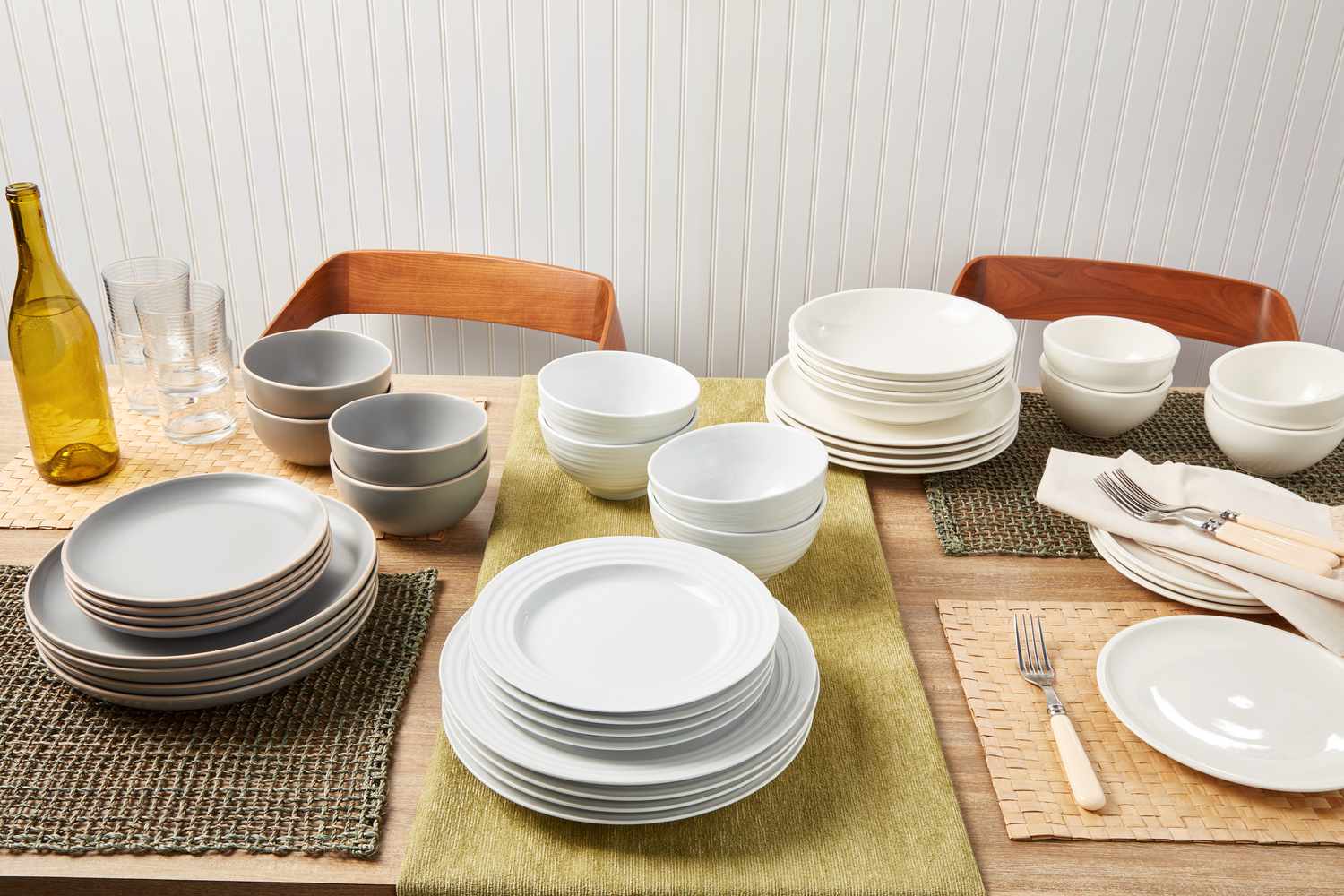

Tableware
What Is The Best Tableware?
Modified: December 7, 2023
Discover the ultimate tableware options for your dining needs. Find the best tableware for any occasion, from elegant dinner parties to casual gatherings.
(Many of the links in this article redirect to a specific reviewed product. Your purchase of these products through affiliate links helps to generate commission for Storables.com, at no extra cost. Learn more)
Introduction
Tableware plays a vital role in our day-to-day lives, whether it’s for everyday dining or special occasions. Choosing the right tableware not only enhances the visual appeal of your meals but also contributes to the overall dining experience. With a wide range of options available, each with its own unique characteristics, it can be overwhelming to decide which tableware is best suited for your needs.
In this article, we will explore the different types of tableware and discuss the factors to consider when making your selection. From ceramic and glass to porcelain, stainless steel, melamine, wood, and even disposable options, we will delve into the features and benefits of each, helping you make an informed decision.
Before we dive into the specifics, it’s important to consider a few key factors when choosing tableware:
Key Takeaways:
- Choose tableware based on your style, durability, and functionality. Whether it’s ceramic for everyday use or porcelain for formal dining, find the perfect match to elevate your meals and create a welcoming atmosphere.
- Consider eco-friendliness and cost when selecting tableware. From elegant porcelain to durable melamine, each material offers unique benefits. Find the balance between practicality and personal style for a memorable dining experience.
Read more: What Constitutes Tableware?
Factors to Consider when Choosing Tableware
- Style and Aesthetics: Determine the overall look and feel you want to achieve. Are you going for a modern, minimalist look or a more traditional, elegant style?
- Durability: Consider the material’s resistance to chips, cracks, and stains. Will the tableware withstand daily use, or is it more suited for occasional use?
- Functionality: Evaluate the practical aspects of the tableware, such as microwave and dishwasher compatibility. Is it suitable for both casual and formal dining?
- Cost: Set a budget and explore options within your price range. Remember to balance quality and affordability.
- Eco-friendliness: If sustainability is important to you, consider choosing tableware made from renewable or recycled materials.
Key Takeaways:
- Choose tableware based on your style, durability, and functionality. Whether it’s ceramic for everyday use or porcelain for formal dining, find the perfect match to elevate your meals and create a welcoming atmosphere.
- Consider eco-friendliness and cost when selecting tableware. From elegant porcelain to durable melamine, each material offers unique benefits. Find the balance between practicality and personal style for a memorable dining experience.
Read more: What Constitutes Tableware?
Factors to Consider when Choosing Tableware
When it comes to choosing the best tableware for your needs, there are several important factors to consider. Each factor contributes to the overall functionality, durability, and aesthetic appeal of the tableware. Let’s explore these factors in more detail:
- Style and Aesthetics: The style and aesthetics of the tableware should align with your personal preferences and the overall theme of your dining area. Consider the colors, patterns, and designs that will complement your existing décor. Whether you prefer modern, minimalist designs or intricate, traditional motifs, there is tableware available to suit every taste.
- Durability: Durability is a crucial factor to consider, especially if you plan to use the tableware on a daily basis. Look for materials that are resistant to chips, cracks, and stains. Ceramic, glass, and porcelain are known for their durability, whereas some materials like melamine and disposable tableware may not be as long-lasting.
- Functionality: The functionality of the tableware is essential for its practicality in everyday use. Consider whether the tableware is microwave-safe, dishwasher-safe, and oven-safe, depending on your needs and preferences. Some materials, like stainless steel, are known for their versatility in different cooking and serving applications.
- Cost: Everyone has a budget to consider when purchasing tableware. It’s important to strike a balance between quality and affordability. Ceramic and glass tableware often come in a wide range of price points, making them accessible to different budgets. On the other hand, premium porcelain or stainless steel tableware may be a bit more expensive but offer superior quality and longevity.
- Eco-friendliness: With sustainability becoming increasingly important, many people are seeking eco-friendly tableware options. Look for tableware made from renewable or recycled materials, such as bamboo or recycled glass. Additionally, consider the manufacturing processes and whether the tableware is free from harmful chemicals or toxins.
By carefully considering these factors, you can find tableware that not only meets your functional needs but also adds a touch of elegance to your dining experience. Remember, there is no one-size-fits-all solution when it comes to tableware, and it’s essential to choose based on your personal preferences and lifestyle.
Ceramic Tableware
Ceramic tableware is a popular choice for both everyday use and special occasions. This versatile material offers a wide range of options in terms of design, style, and functionality. Here are some key features and benefits of ceramic tableware:
- Durability: Ceramic tableware is known for its durability and resistance to scratches and chips. It can withstand regular use and is less prone to breaking compared to delicate materials like porcelain or glass.
- Heat Retention: Ceramic tableware retains heat well, making it ideal for serving hot dishes. Whether you’re serving soup, pasta, or any other hot meal, ceramic dishes will help keep your food warm for longer periods.
- Versatility: Ceramic tableware comes in a variety of shapes, sizes, colors, and patterns, allowing you to find options that match your personal style and complement your dining area. From classic white dinnerware to bold and vibrant designs, there is something for everyone.
- Ease of Maintenance: Cleaning ceramic tableware is a breeze. Most ceramic dishes are dishwasher-safe, making it convenient for everyday use. However, it’s always recommended to check the manufacturer’s guidelines to ensure proper care.
- Affordability: Ceramic tableware is generally more affordable compared to other materials like porcelain or stainless steel. This makes it a budget-friendly option for those looking to upgrade their tableware without breaking the bank.
While ceramic tableware offers numerous benefits, it’s important to note that it may not be suitable for every occasion. For formal events or fine dining, porcelain or bone china may be preferred due to their more refined and delicate appearance. Additionally, ceramic dishes may not be suitable for use in the microwave or oven, depending on the specific glaze and construction.
When selecting ceramic tableware, choose pieces that align with your personal style and meet your specific needs and preferences. Whether you opt for a traditional set or a more contemporary design, ceramic tableware will definitely add a touch of elegance and practicality to your dining experience.
Glass Tableware
Glass tableware is known for its timeless appeal and transparency, which adds a touch of sophistication to any dining setting. From everyday use to formal occasions, glass tableware offers a range of benefits and features that make it a popular choice. Here’s a closer look at glass tableware:
- Elegance and Versatility: Glass tableware is admired for its elegant and refined appearance. It effortlessly enhances the visual appeal of your meals and adds a touch of sophistication to your table setting. Glassware comes in various shapes, sizes, and designs, allowing you to choose pieces that suit your style and complement your dining area.
- Transparency: The transparency of glass tableware allows you to showcase the vibrant colors and textures of your food, creating a visually appealing presentation. It adds an element of beauty and elegance to your table setting, making it ideal for both casual and formal occasions.
- Durability: Glass tableware is known for its durability and resistance to scratches and stains. It can withstand regular use and is less likely to chip or break compared to delicate materials like porcelain or ceramic. However, it’s important to handle glassware with care to avoid any accidental damage.
- Easy to Clean: Cleaning glass tableware is a breeze. Most glass dishes are dishwasher-safe, making it convenient for everyday use. However, it’s always recommended to check the manufacturer’s guidelines for specific care instructions.
- Heat Resistance: Glassware has good heat resistance and can be used to serve both hot and cold dishes. It retains and distributes heat evenly, making it suitable for serving soups, desserts, beverages, and more. Some glassware designs also come with heat-resistant properties, allowing them to be used in the oven or microwave.
One of the key considerations with glass tableware is its fragility. While glassware is generally sturdy and durable, it can still break if mishandled or subjected to extreme temperature changes. It’s important to exercise caution when handling glass dishes to avoid any accidents.
Whether you’re enjoying a casual meal with friends or hosting a formal dinner party, glass tableware adds a touch of elegance and sophistication to any occasion. It provides a beautiful backdrop for your carefully plated dishes and allows your culinary creations to shine.
When choosing glass tableware, consider your personal style, the size and capacity of the dishes, and any specific features you may require, such as microwave or oven-safe properties. With its timeless appeal and versatile functionality, glass tableware is a great choice for any dining setup.
Read more: What Is The Proper Order Of Tableware?
Porcelain Tableware
Porcelain tableware is renowned for its elegance, delicacy, and superior quality. It is a popular choice for formal dining settings and special occasions. Porcelain offers a range of features and benefits that set it apart from other tableware materials. Let’s explore some of the key characteristics of porcelain tableware:
- Refined and Sophisticated: Porcelain tableware exudes a sense of refinement and sophistication. Its smooth and glossy surface, combined with its delicate and lightweight nature, creates an aura of elegance on any dining table. The pure white color adds a touch of timeless beauty and complements a variety of table settings.
- Strength and Durability: Despite its delicate appearance, porcelain is a highly durable material. It is fired at high temperatures, resulting in a strong and chip-resistant tableware option. Porcelain is designed to withstand the rigors of daily use and preserve its beauty for years to come.
- Fine and Thin: The thinness of porcelain tableware adds to its delicate and refined nature. It offers a lightweight dining experience, which is particularly appreciated when hosting formal events or enjoying a luxurious meal. The thin walls of porcelain dishes help to evenly distribute heat, making it ideal for serving hot dishes.
- Stain and Odor Resistance: Porcelain is naturally non-porous, which means it is resistant to stains and odors. The smooth glaze on porcelain tableware prevents liquids and food particles from seeping into the surface, making it easier to clean and maintain its pristine appearance over time.
- Versatility: Porcelain tableware is highly versatile, suitable for both casual and formal dining occasions. Its elegant and timeless design complements a wide range of table settings, from modern and minimalist to classic and ornate. Porcelain dishes can be paired with other tableware pieces to create a cohesive and sophisticated look.
While porcelain tableware offers numerous benefits, it is worth noting that it can be more expensive compared to other materials. However, the investment in quality porcelain is well worth it for those seeking long-lasting and timeless tableware.
When choosing porcelain tableware, consider factors such as the specific design, thickness, and weight that suits your preferences. Pay attention to any special care instructions provided by the manufacturer, as some porcelain may require more delicate handling or specific cleaning methods to maintain its pristine condition.
Porcelain tableware embodies a sense of elegance, refinement, and timeless beauty. It elevates any dining experience, adding a touch of luxury and sophistication to your table setting. Whether you’re hosting an intimate dinner party or enjoying a family meal, porcelain tableware sets the stage for a truly memorable dining experience.
When choosing tableware, consider the material, style, and durability. Porcelain and bone china are elegant but fragile, while stoneware and melamine are more durable for everyday use. Choose a style that complements your dining aesthetic.
Stainless Steel Tableware
Stainless steel tableware offers a sleek and modern option for both casual and formal dining. It is known for its durability, versatility, and contemporary appeal. Let’s explore the features and benefits of stainless steel tableware:
- Durability: Stainless steel tableware is highly durable and built to last. It is resistant to rust, scratches, and stains, making it suitable for everyday use. Stainless steel is known for its strength and resilience, ensuring that your tableware will withstand the test of time.
- Versatility: Stainless steel tableware complements a range of dining styles, from casual to formal. Its sleek and modern design adds an elegant touch to any table setting. Additionally, stainless steel tableware can seamlessly blend with other types of tableware, such as glass or porcelain, allowing you to create diverse and eye-catching table arrangements.
- Heat Resistance: Stainless steel is known for its exceptional heat resistance. This makes stainless steel tableware suitable for serving hot dishes directly from the stovetop or oven to the table. Stainless steel retains heat well, allowing your meals to stay warmer for longer periods.
- Low Maintenance: Stainless steel tableware is easy to clean and maintain. It is dishwasher-safe and can be easily wiped clean with a cloth. Stainless steel is resistant to tarnish and discoloration, ensuring that your tableware will maintain its polished appearance over time with minimal effort.
- Hygienic: Stainless steel is a hygienic material for tableware, as it does not harbor bacteria or absorb odors like porous materials. This makes it a practical choice for food preparation and dining, ensuring a clean and sanitary eating experience.
Stainless steel tableware is a popular choice for everyday meals, as well as outdoor and camping activities. Its durability and resistance to damage make it ideal for these settings, where tableware may be subjected to rough handling or outdoor elements.
When choosing stainless steel tableware, consider factors such as the weight of the utensils, the design and finish, and any specific features that you may prefer, such as heat-resistant handles or serving utensils. Additionally, look for high-quality stainless steel with a higher percentage of chromium and nickel, as this ensures greater resistance to corrosion and maintains the polished appearance of the tableware.
Stainless steel tableware offers a contemporary and practical option for a wide range of dining occasions. Whether it’s a casual meal with family or an elegant dinner party, stainless steel tableware will elevate your dining experience with its modern design and exceptional durability.
Melamine Tableware
Melamine tableware is a popular choice for casual dining, outdoor events, and families with young children. It is known for its durability, affordability, and vibrant designs. Here are some key features and benefits of melamine tableware:
- Durability: Melamine tableware is highly durable and resistant to chipping, breaking, and scratching. It is designed to withstand the rigors of everyday use, making it ideal for households with children or for outdoor dining where there is a higher risk of accidental drops or bumps.
- Lightweight: Melamine is a lightweight material, making it easy to handle and carry. This makes it a practical choice for picnics, camping trips, and other outdoor activities where portability is important.
- Vibrant Designs: Melamine tableware comes in a wide variety of vibrant colors and patterns. Whether you prefer bold and fun designs or more subtle and elegant options, there is melamine tableware available to suit your personal style and complement your dining area.
- Easy to Clean: Melamine tableware is dishwasher-safe, making it easy to clean and maintain. Its non-porous surface prevents liquids and stains from penetrating, allowing for quick and effortless cleanup. However, it is important to note that melamine is not microwave-safe and should not be used to heat food.
- Affordability: Melamine tableware is relatively inexpensive compared to other materials like ceramic or porcelain. This makes it a cost-effective option for individuals or families who want attractive and durable tableware without breaking the bank.
- Impact Resistance: Melamine has good impact resistance, making it less likely to shatter or break if accidentally dropped. This is especially advantageous for families with young children, as it reduces the risk of injury from broken tableware.
While melamine tableware offers numerous benefits, it is important to note that it is not suitable for use in the microwave or oven. Exposing melamine to high temperatures can cause it to warp or release harmful chemicals. Therefore, it is recommended to only use melamine tableware for serving cold or room temperature food.
When selecting melamine tableware, choose from reputable brands that adhere to safety standards and regulations. Look for melamine products that are BPA-free and food-safe, ensuring your peace of mind when using them for your meals and snacks.
Melamine tableware offers a practical, durable, and vibrant option for everyday meals and outdoor dining. Whether you’re enjoying a picnic in the park or hosting a casual gathering, melamine tableware will add a splash of color and convenience to your dining experience.
Wood Tableware
Wood tableware brings a rustic and natural charm to any dining experience. It is appreciated for its unique texture, warmth, and eco-friendliness. Here are some key features and benefits of wood tableware:
- Natural Beauty: Wood tableware is prized for its natural and timeless beauty. Each piece has its own unique grain pattern, adding character and warmth to your table setting. Wood tableware can create a cozy and inviting atmosphere, especially in rustic or farmhouse-inspired kitchens.
- Eco-friendly: Wood is a renewable and sustainable resource, making wood tableware an environmentally friendly choice. Opting for tableware made from responsibly sourced wood helps reduce the demand for plastic or disposable alternatives, supporting a greener lifestyle.
- Durability: High-quality wood tableware is known for its durability and longevity. Well-crafted wooden bowls, plates, and utensils can withstand daily use and retain their beauty over time. Wood tableware is often coated with food-safe finishes to enhance its resistance to staining and make it easier to clean.
- Heat Resistance: Wood has natural insulation properties, making it suitable for serving hot and cold dishes alike. Wooden bowls and trays can help maintain the temperature of your food, keeping it warm or cool for longer during mealtime.
- Sustainable Maintenance: Wood tableware requires regular maintenance to keep it in optimal condition. It is recommended to hand wash wooden tableware with mild soap and warm water, avoiding prolonged soaking. Applying food-safe oil periodically helps nourish the wood and maintain its natural luster.
- Organic and Chemical-free: Wood tableware is a healthier alternative to plastic or metal. It is free from chemicals or toxins that can leach into food. This makes it a popular choice for individuals who prefer more natural and organic dining experiences.
While wood tableware offers numerous benefits, it is important to remember that wood is a porous material and may absorb flavors and odors from strongly scented or colored food. It is recommended to avoid using wood tableware for highly acidic or staining foods. Additionally, wood tableware should not be exposed to excessive heat or soaked in water for extended periods, as this can cause warping or splitting.
When choosing wood tableware, consider the type of wood used, such as bamboo, acacia, or olive wood. Each wood has its own unique characteristics and visual appeal. Look for well-crafted pieces made from sustainably sourced wood and finished with food-safe coatings.
Wood tableware adds a touch of natural elegance and rustic charm to your dining experience. Whether you’re enjoying a cozy family dinner or hosting a dinner party, wood tableware creates a warm and inviting ambiance that will impress your guests.
Read more: Best Practices For Handling Tableware
Disposable Tableware
Disposable tableware provides a convenient and practical solution for various occasions, such as outdoor events, picnics, parties, and large gatherings. While not as durable as other types of tableware, disposable options offer several advantages that make them a popular choice. Here are some key features and benefits of disposable tableware:
- Convenience: One of the main advantages of disposable tableware is its convenience. With disposable plates, cups, and cutlery, there is no need for washing or storage after use. This makes them ideal for occasions where time and resources for cleanup are limited.
- Cost-effective: Disposable tableware is typically more affordable than reusable tableware options. This is especially beneficial when hosting large events or parties where the cost of purchasing, cleaning, and storing reusable tableware may be prohibitive.
- Variety of Options: Disposable tableware comes in a wide range of options to suit different needs and preferences. From basic white plates and clear plastic cups to themed or festive designs, you can find disposable tableware that matches the theme or mood of your event.
- Hygiene: Disposable tableware is often made from food-grade materials, ensuring a hygienic dining experience. It eliminates the risk of cross-contamination as each guest can have their own clean set of utensils and plates.
- Easy Cleanup: After use, disposable tableware can be conveniently disposed of, eliminating the need for washing or sterilizing. This reduces the strain on water resources and saves time and effort in cleaning up after meals.
- Portability: Disposable tableware is lightweight and portable, making it ideal for outdoor activities, camping trips, or picnics. It allows for easy transport and disposal, minimizing the need to carry heavy or fragile reusable tableware.
It’s important to note that while disposable tableware offers convenience and cost-effectiveness, it does have some drawbacks. The materials used are typically not as durable or environmentally friendly as reusable options. Additionally, disposable tableware contributes to waste generation, which can have a negative impact on the environment.
When selecting disposable tableware, consider choosing options that are made from eco-friendly and biodegradable materials, such as bamboo or compostable plant-based plastics. These alternatives offer a more sustainable option while retaining the convenience and practicality of disposable tableware.
Disposable tableware serves a specific purpose in providing a hassle-free and convenient solution for various events and gatherings. It allows you to enjoy your meal without the worry of cleanup, making it a popular choice for those seeking simplicity and ease during special occasions.
Conclusion
Choosing the best tableware for your needs can greatly enhance your dining experience. Whether you opt for ceramic, glass, porcelain, stainless steel, melamine, wood, or disposable tableware, each option has its unique features and benefits.
Ceramic tableware offers durability and versatility, making it suitable for everyday use. Glass tableware adds an elegant touch with its transparency and versatility. Porcelain tableware exudes sophistication and delicacy, perfect for formal dining occasions. Stainless steel tableware combines modernity with durability, making it a practical choice for both casual and formal settings. Melamine tableware provides durability and vibrant designs, ideal for outdoor events and families with young children. Wood tableware brings a rustic and natural charm to your table, adding warmth to any dining experience. Disposable tableware offers convenience and cost-effectiveness for various occasions, making cleanup a breeze.
When choosing tableware, consider factors such as style, durability, functionality, cost, and eco-friendliness. Each material has its own strengths and considerations. It’s important to strike a balance between your personal preferences, the occasion, and the practicality of the tableware.
Remember, tableware not only serves a functional purpose but also adds to the visual appeal of your meals. It sets the tone and creates a welcoming atmosphere for your dining experience. Find the tableware that suits your style, complements your dining area, and enhances the joy of sharing meals with family and friends.
Whichever tableware you choose, ensure proper care and maintenance to prolong its lifespan. Follow the manufacturer’s recommendations for cleaning and handling to ensure your tableware remains in optimal condition.
Ultimately, the best tableware is the one that brings you joy and helps create memorable moments around the table. So, go ahead and select the tableware that reflects your personal style, fits your lifestyle, and enhances your dining experience. Happy table setting!
Frequently Asked Questions about What Is The Best Tableware?
Was this page helpful?
At Storables.com, we guarantee accurate and reliable information. Our content, validated by Expert Board Contributors, is crafted following stringent Editorial Policies. We're committed to providing you with well-researched, expert-backed insights for all your informational needs.
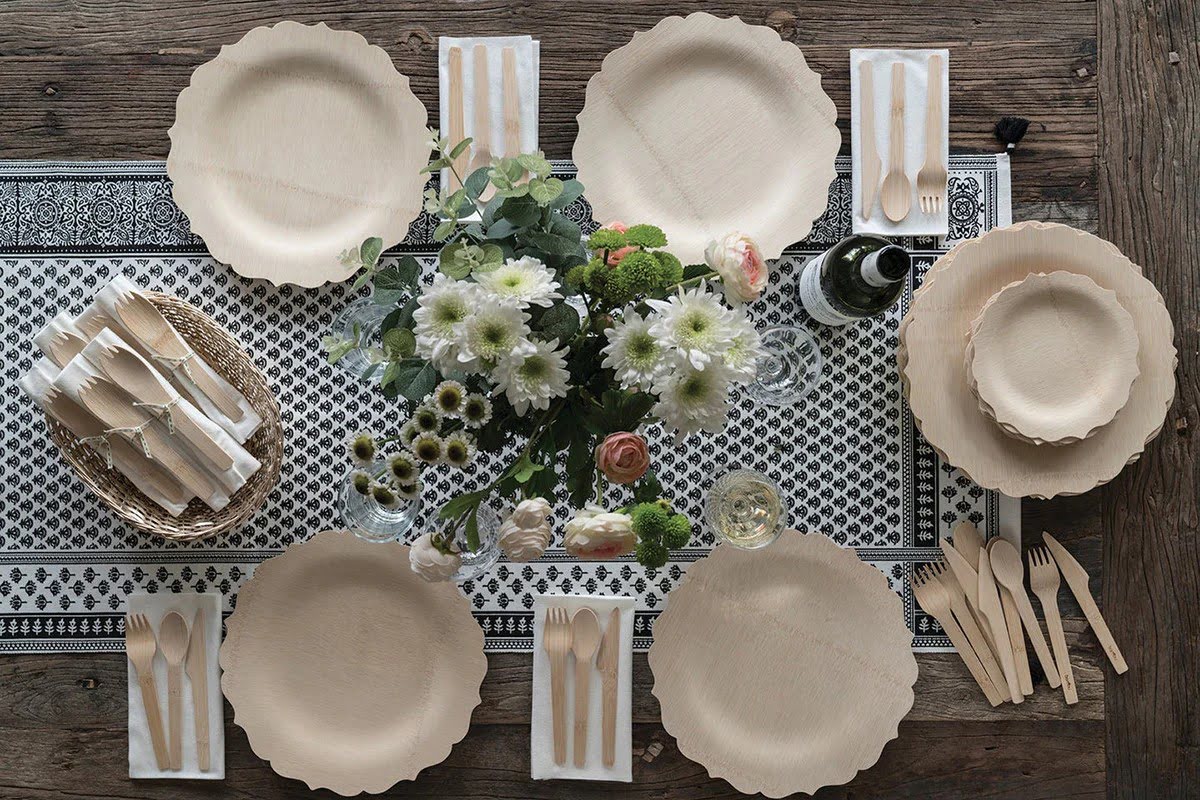
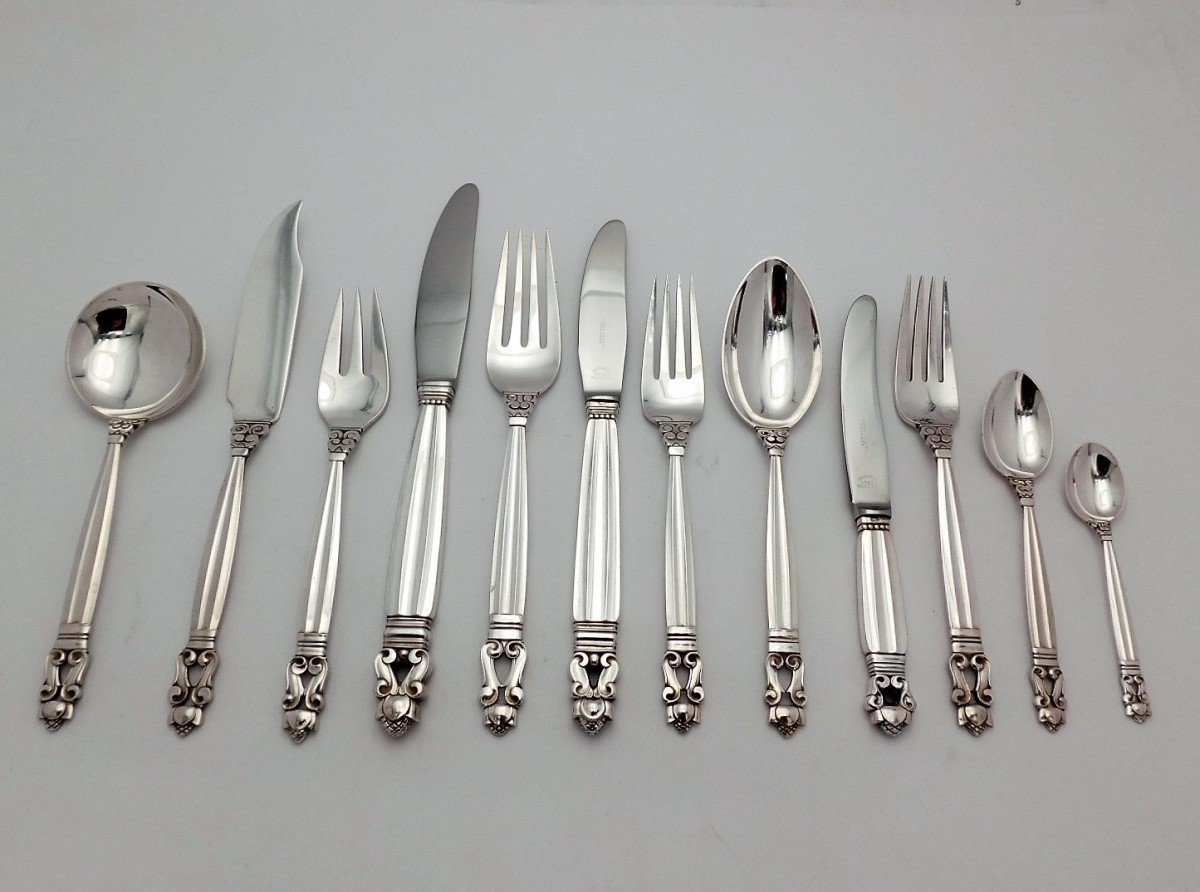
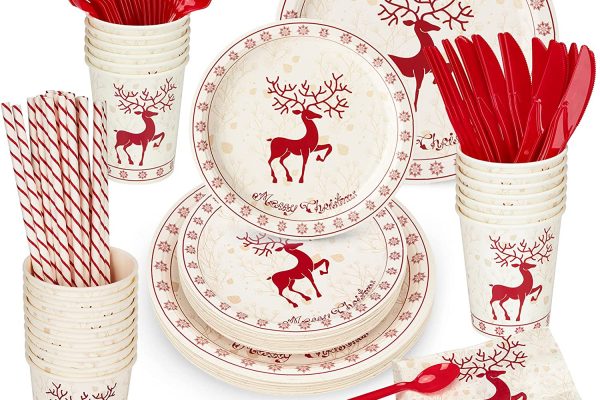
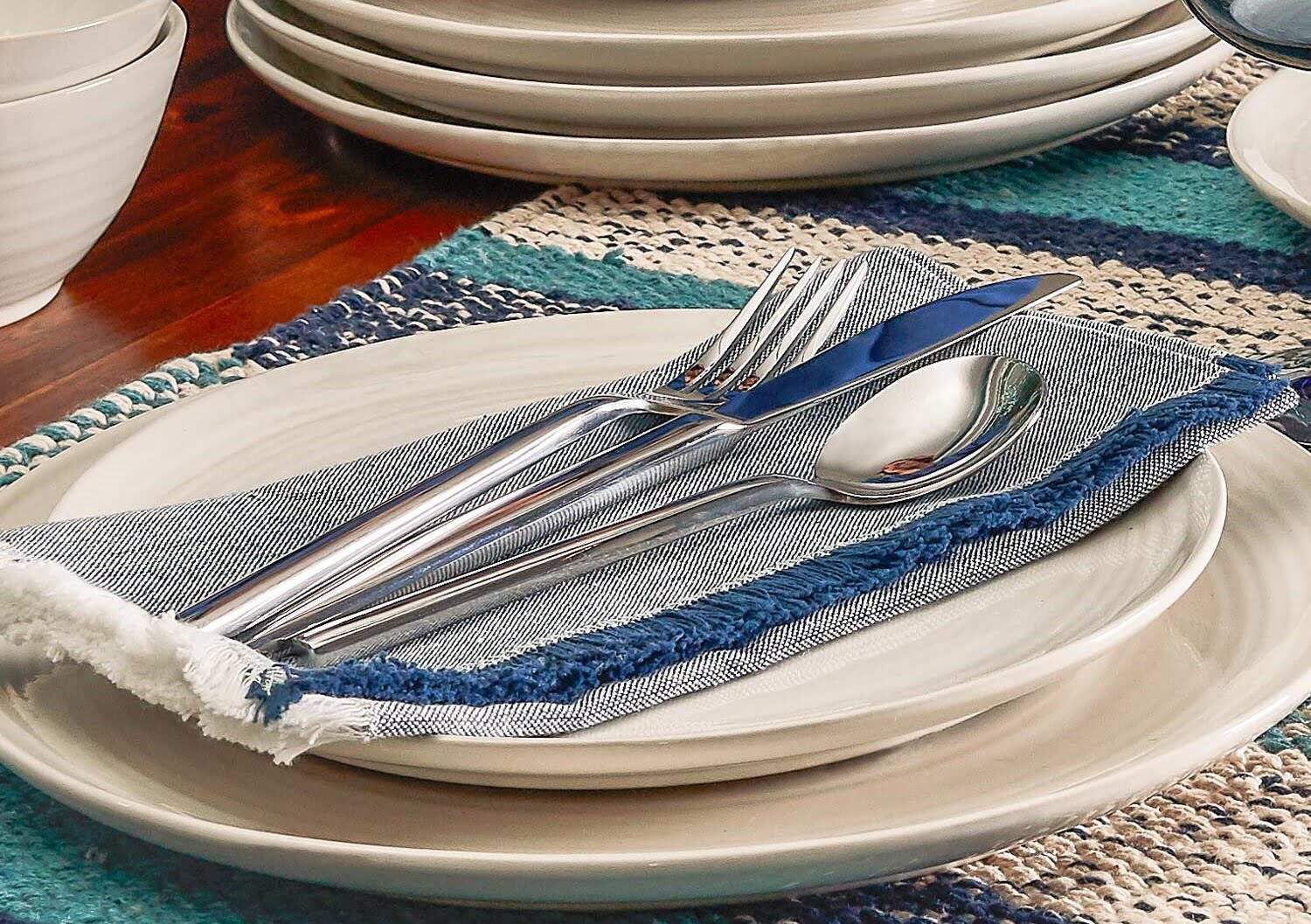
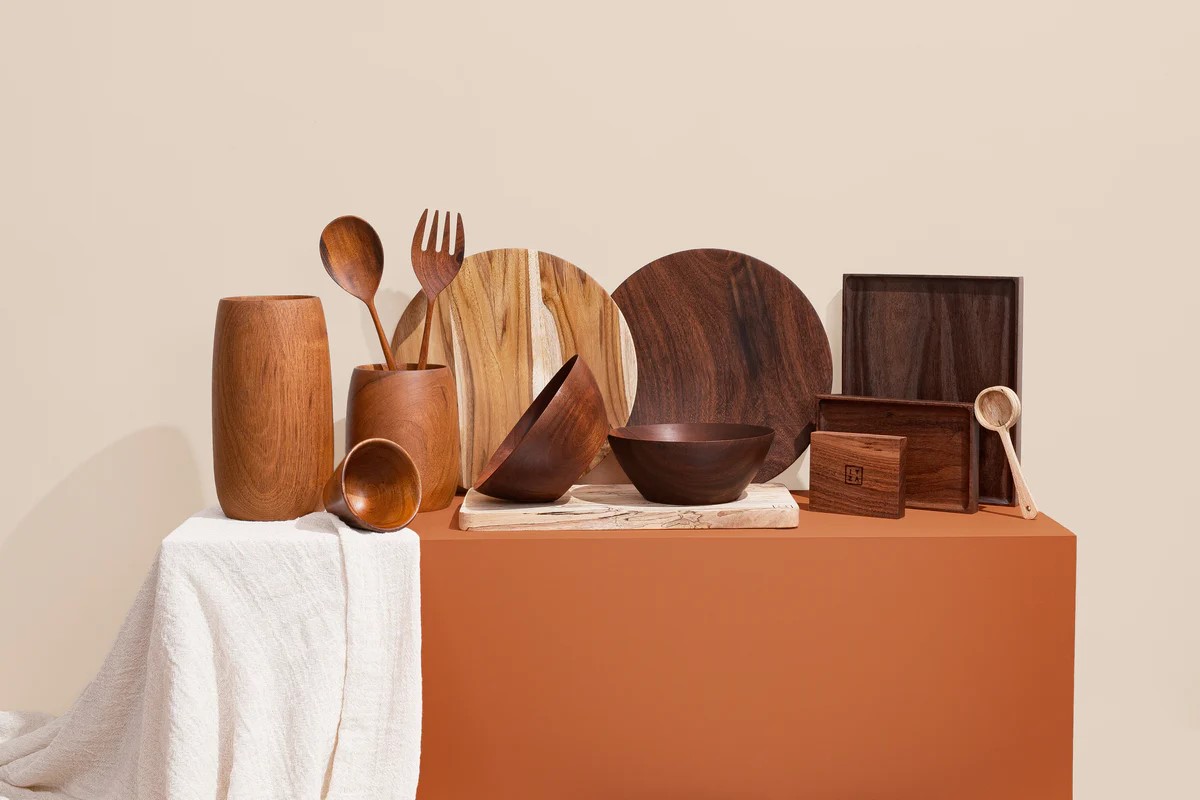
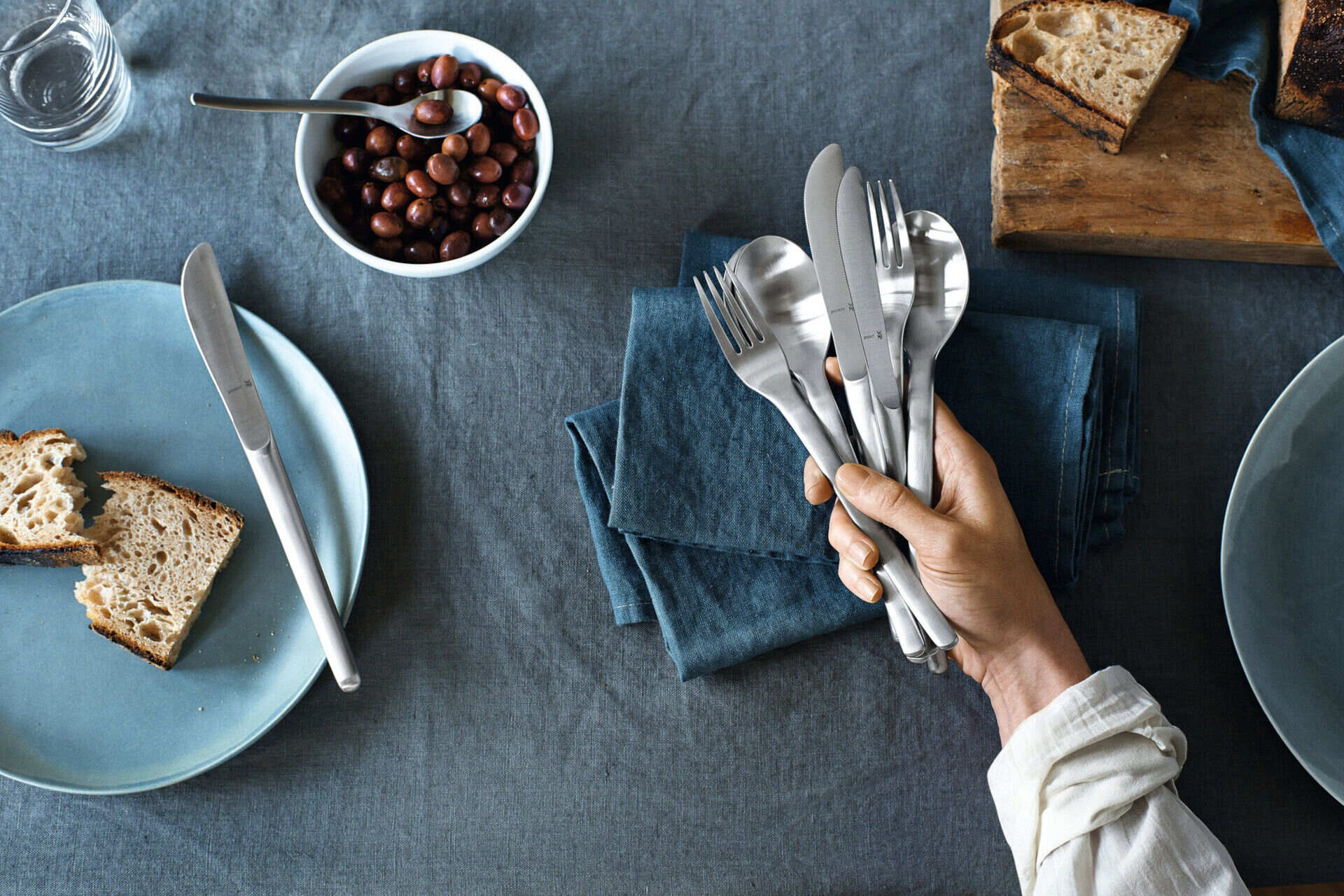
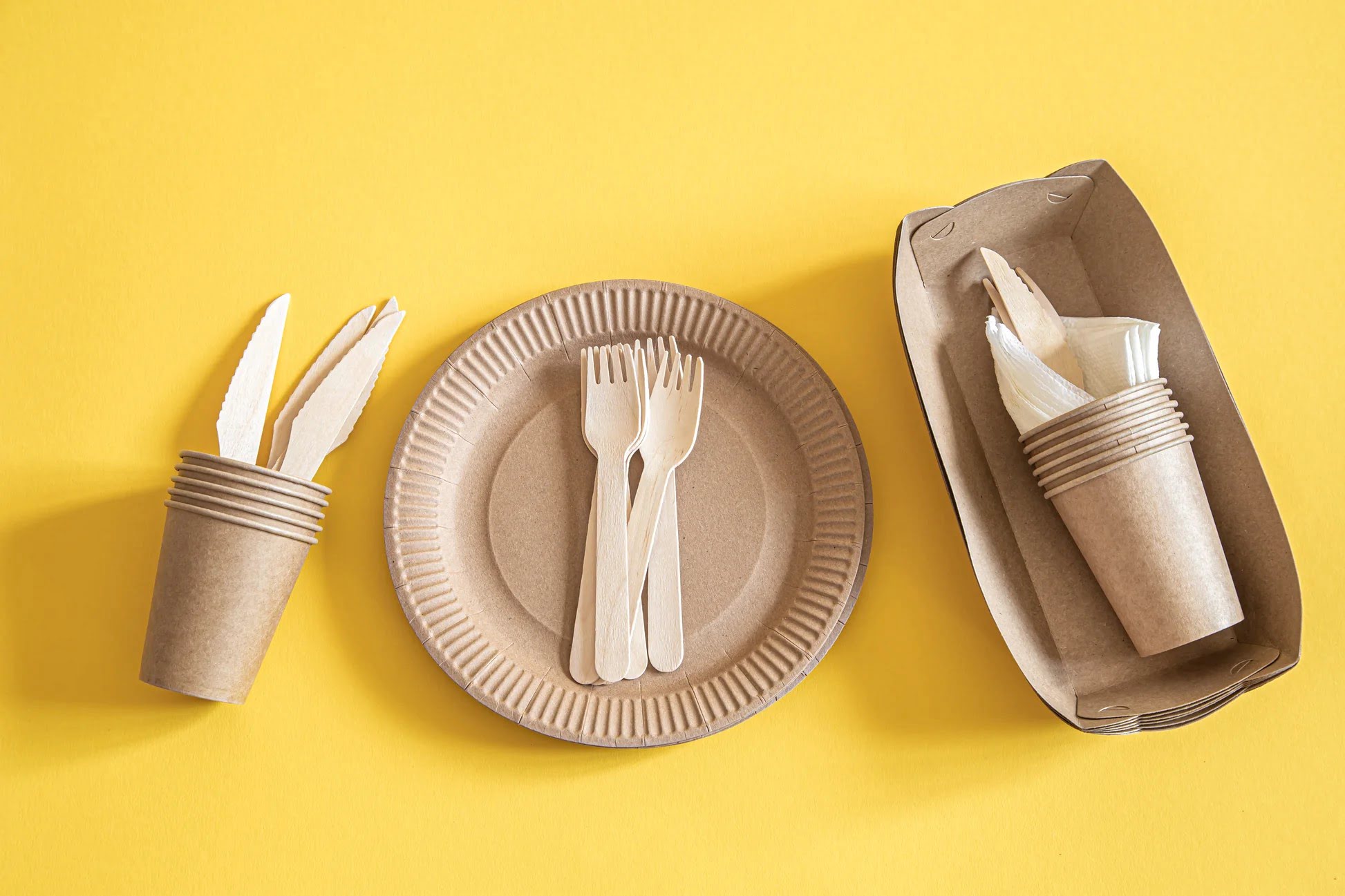
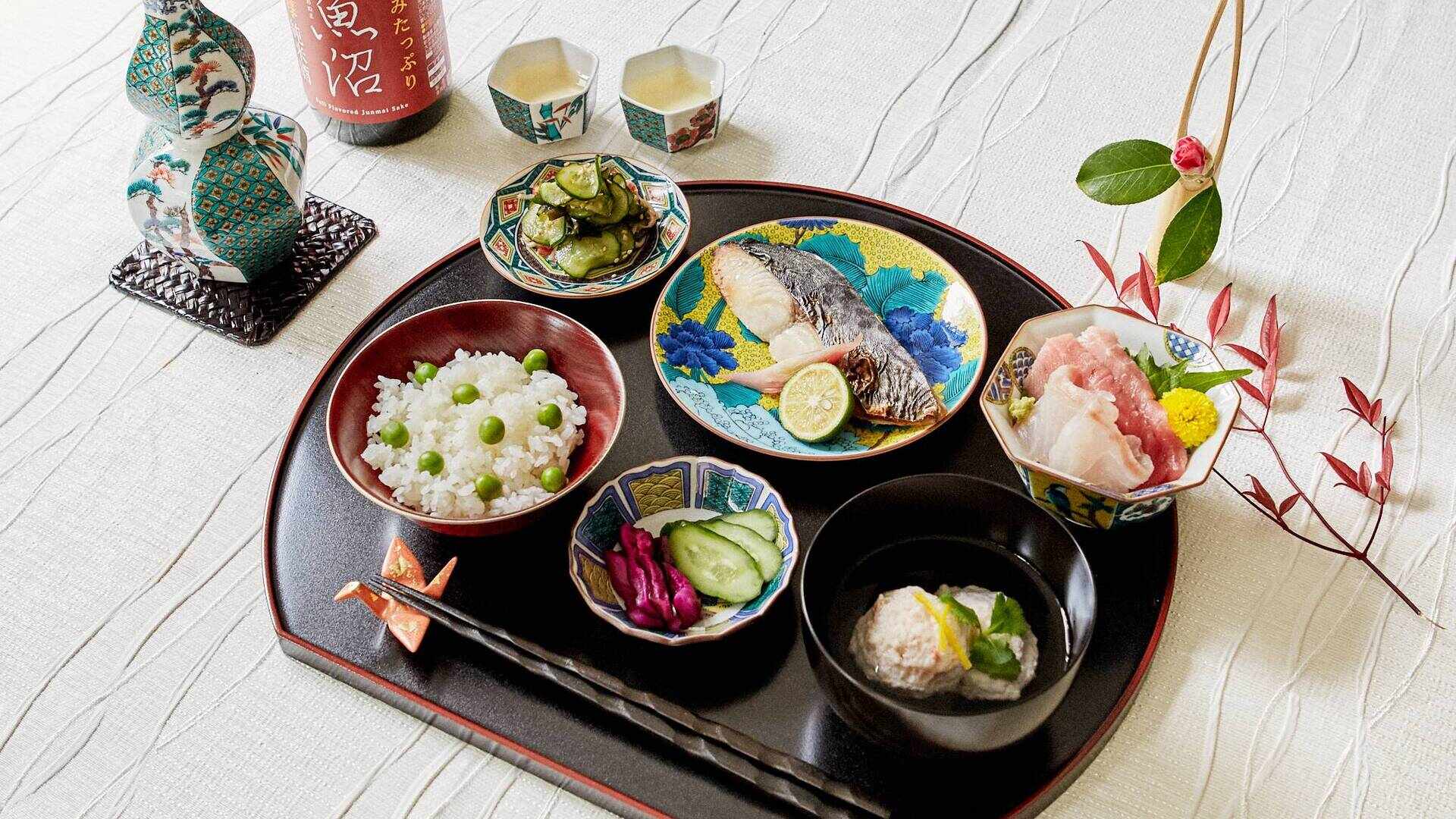
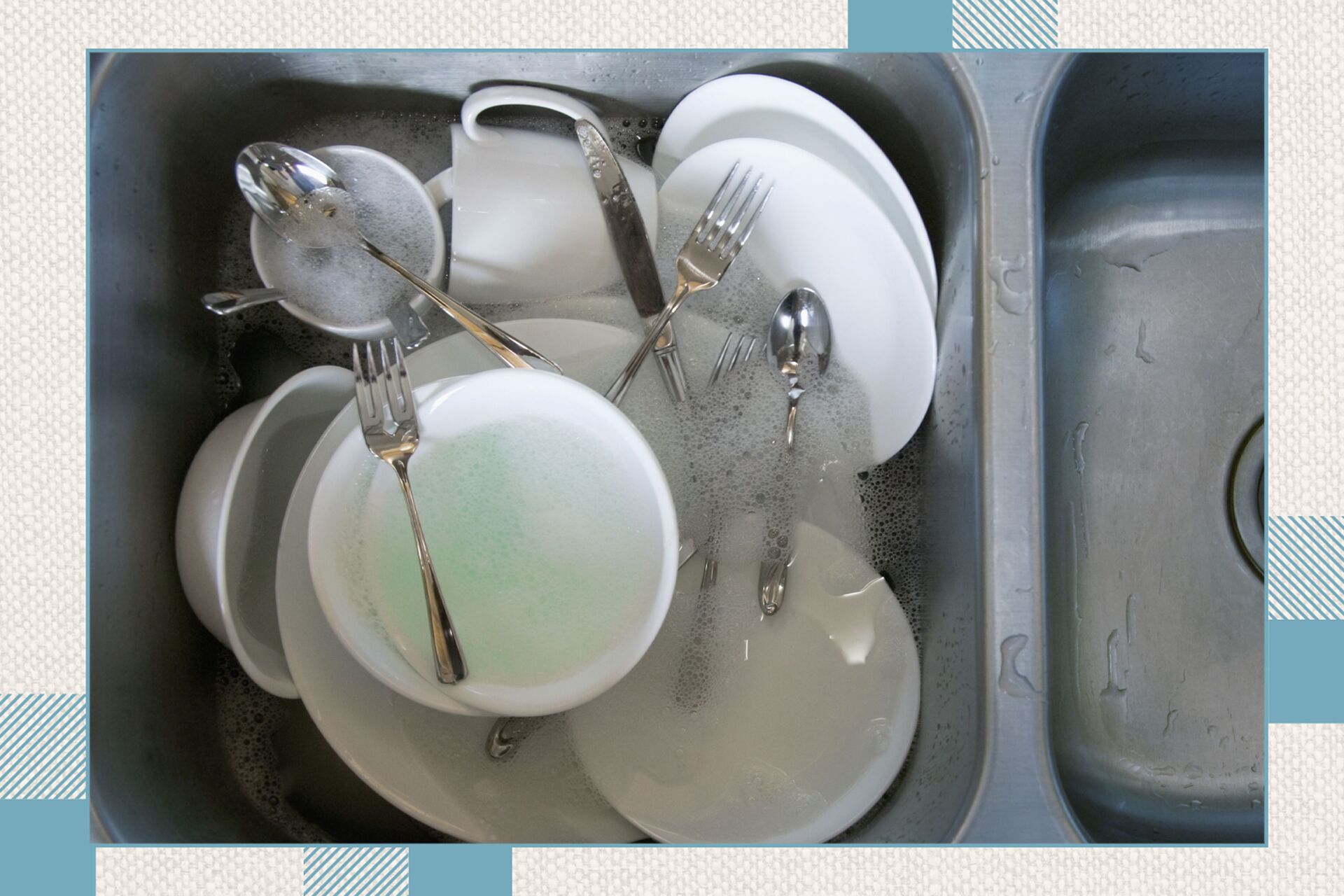
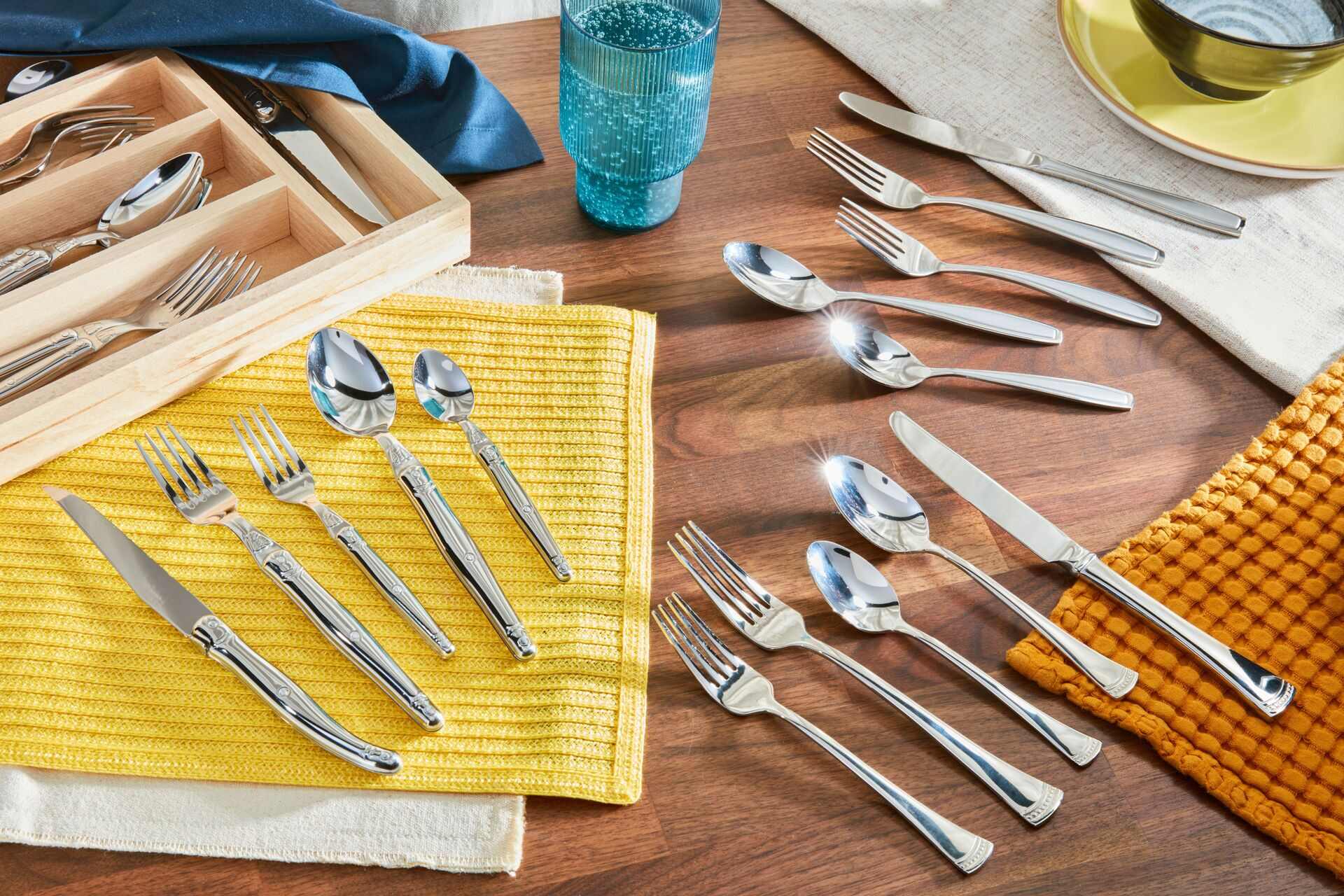
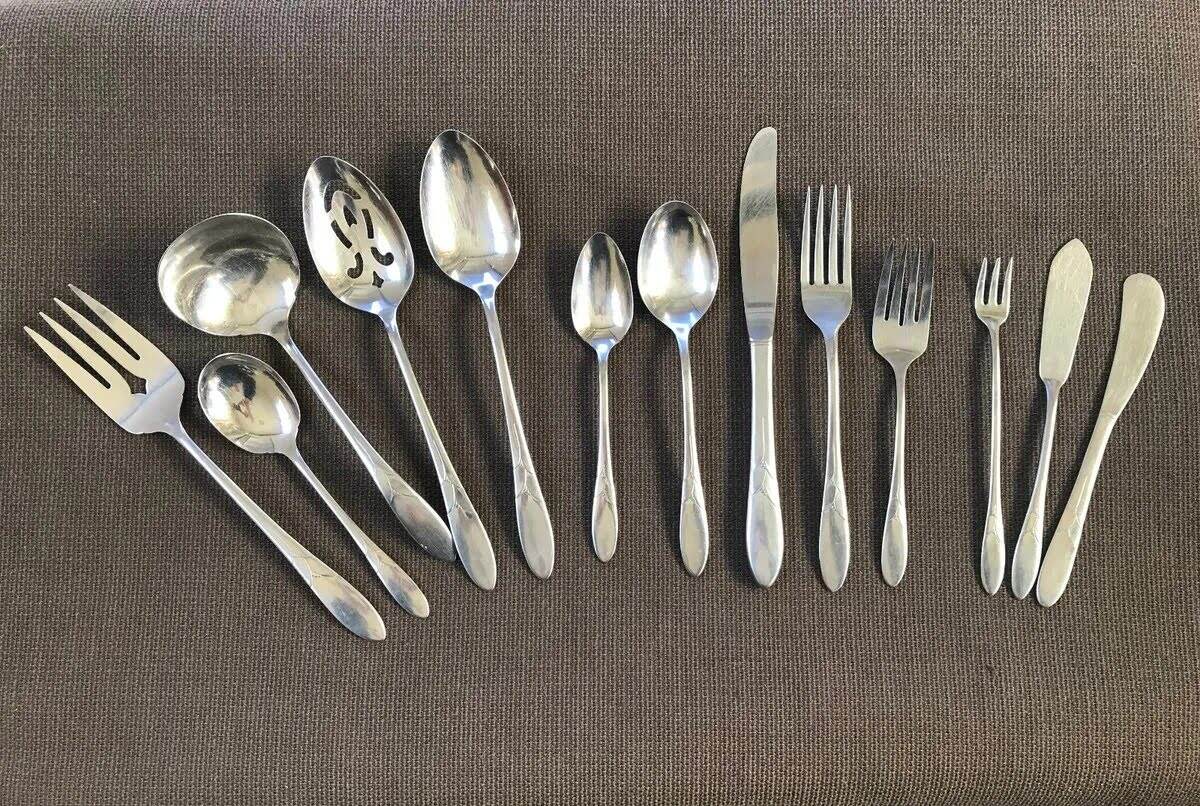
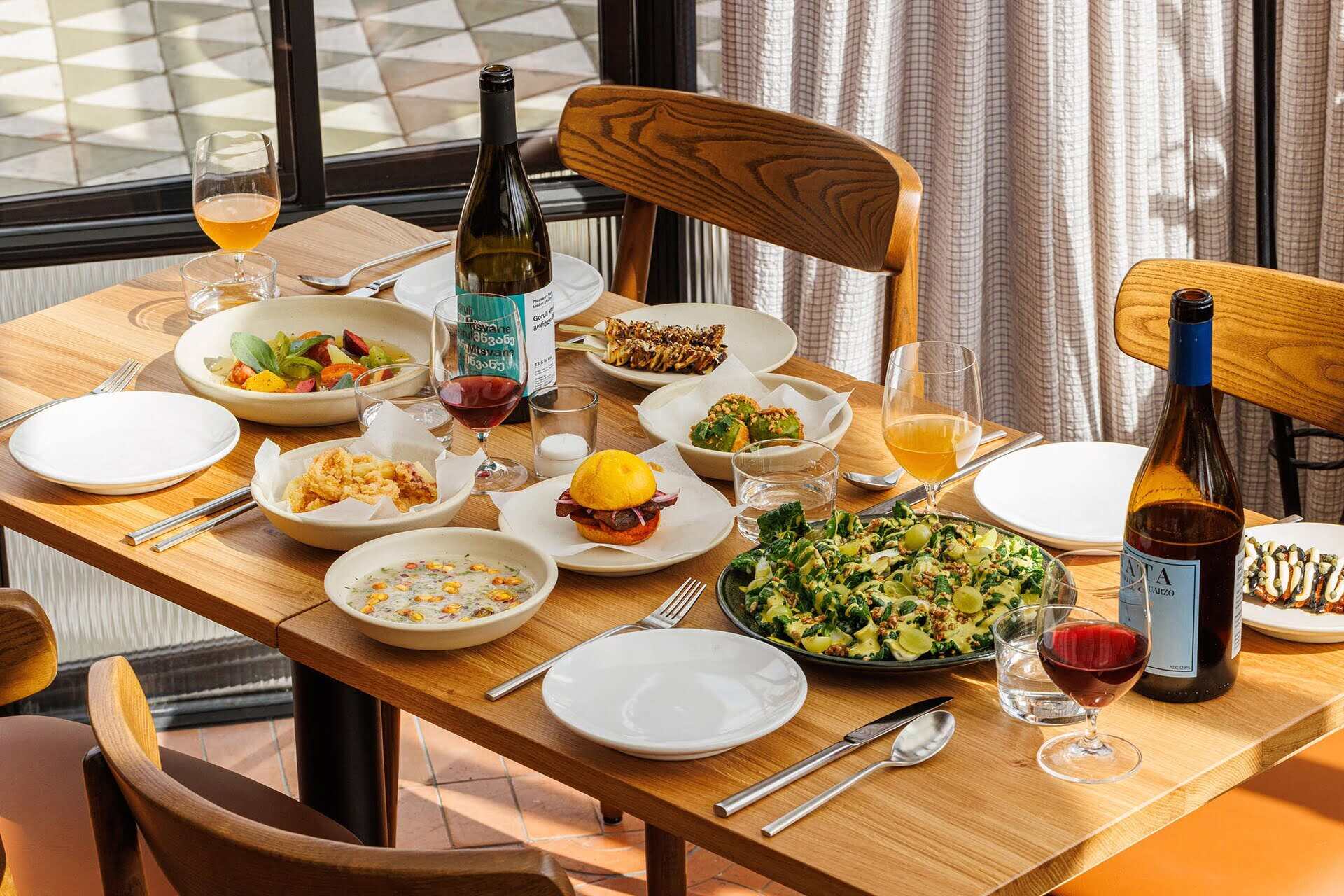
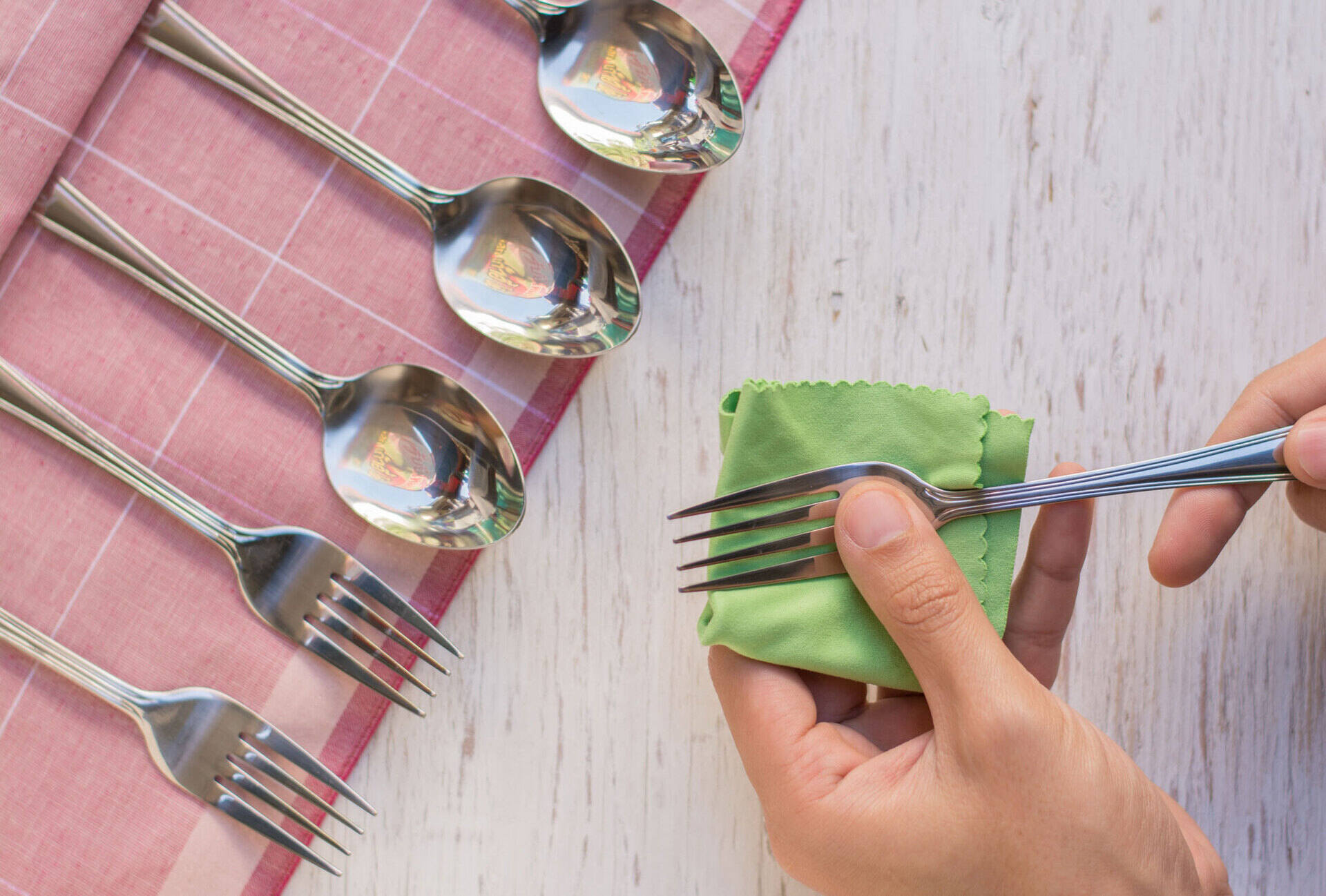

0 thoughts on “What Is The Best Tableware?”